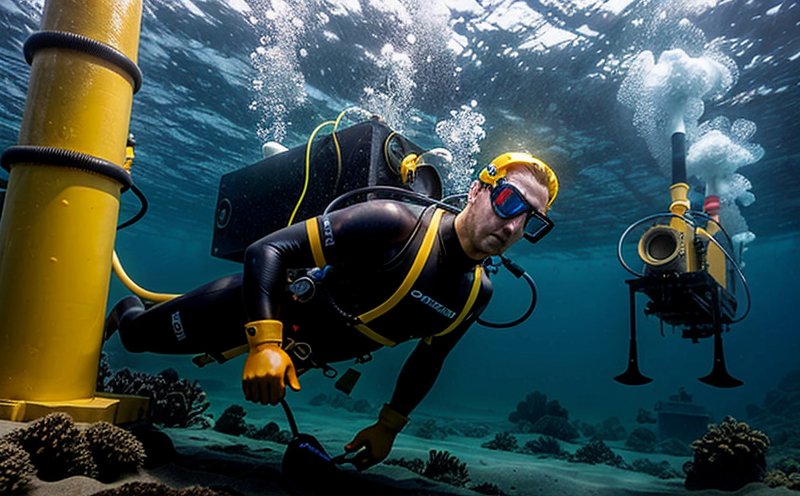ASTM D665 Rust Preventive Testing in Subsea Lubricants
In the marine and ship equipment testing sector, particularly within subsea and underwater equipment, ensuring lubricant performance is critical. Rust preventive properties of subsea lubricants play a pivotal role in safeguarding machinery from corrosion during extended periods submerged in seawater or other corrosive environments.
The ASTM D665 test method for determining the rust preventive properties of subsea lubricants provides a standardized approach to evaluating these critical properties. This service ensures that lubricants meet the necessary performance requirements, thereby enhancing reliability and longevity of equipment used in harsh marine environments.
Our laboratory adheres strictly to this standard, ensuring accurate and reliable results. The ASTM D665 test measures the rust preventive properties by exposing a steel strip to an aqueous solution containing the tested lubricant for a specified period. Afterward, the strip is inspected visually or through other means as outlined in the standard.
The test results are essential for quality managers and compliance officers to ensure that purchased lubricants meet the necessary standards. R&D engineers can use these results to develop new formulations that enhance rust preventive properties. Procurement teams benefit from this service by having a reliable, independent testing partner that ensures product quality before it reaches their specifications.
Testing under ASTM D665 is particularly important for subsea equipment where exposure to seawater and other corrosive elements can lead to rapid degradation of lubricants. By ensuring rust preventive properties meet or exceed the required levels, we help our clients maintain reliable operations in demanding environments.
The test results provide a quantitative measure of how effectively a lubricant protects against rust formation under specific conditions. This is crucial for maintaining the integrity and performance of subsea equipment, which can be costly to replace or repair if unprotected from corrosion.
Our team of experts ensures that all tests are conducted in accordance with ASTM D665 standards, providing clients with confidence that their lubricants meet the necessary criteria. We use state-of-the-art facilities and instrumentation to ensure accurate testing and reporting.
Applied Standards
| Standard Code | Description |
|---|---|
| ASTM D665-18 | Standard Test Method for Rust Preventive Properties of Lubricating Oils. |
Scope and Methodology
| Scope | Description |
|---|---|
| Rust Preventive Properties | Determines the rust preventive properties of subsea lubricants. |
The ASTM D665 test involves exposing a steel strip to an aqueous solution containing the tested lubricant. The test is conducted at 23°C (73°F) for a period specified in the standard, typically 14 days. After this period, the strip is visually inspected for rust formation.
The method allows for both quantitative and qualitative assessments of the rust preventive properties. Quantitative results are obtained by measuring the diameter of rust spots on the steel strip. Qualitative results involve visual inspection to determine whether rust has formed on the surface of the strip.
Environmental and Sustainability Contributions
- Evaluating lubricant performance under harsh marine conditions helps prevent unnecessary replacements due to corrosion, thus reducing waste generation.
- The accurate testing of rust preventive properties ensures that equipment operates efficiently, minimizing downtime and operational costs associated with maintenance.
- By ensuring compliance with international standards like ASTM D665, we contribute to the overall quality and reliability of marine equipment, promoting sustainable practices in the industry.





